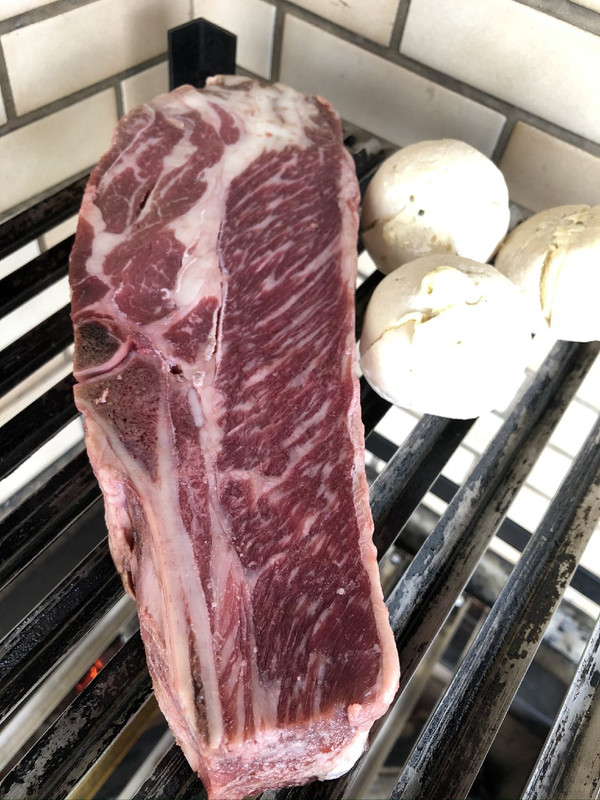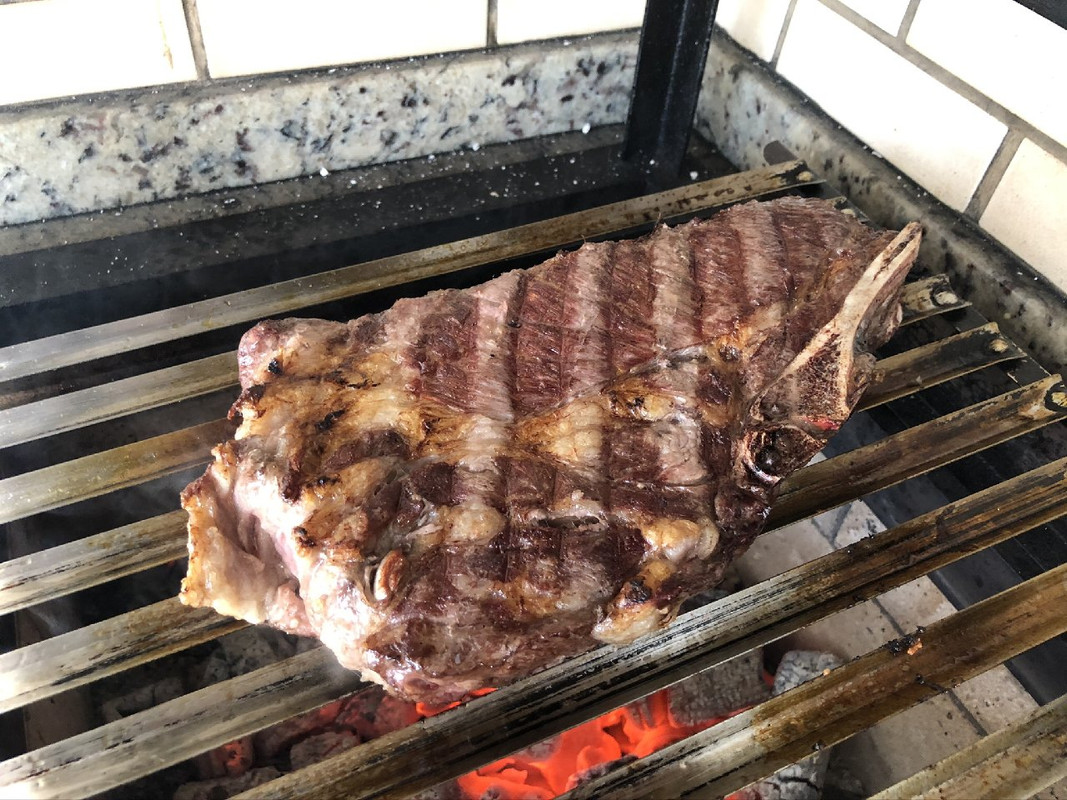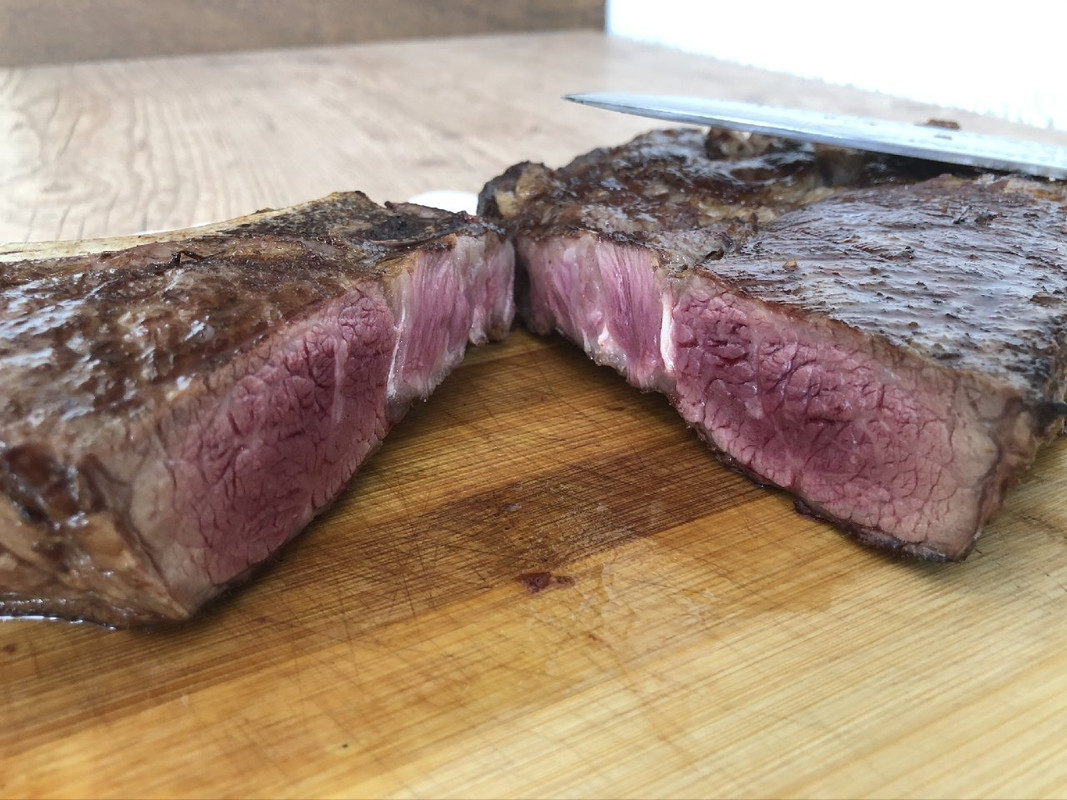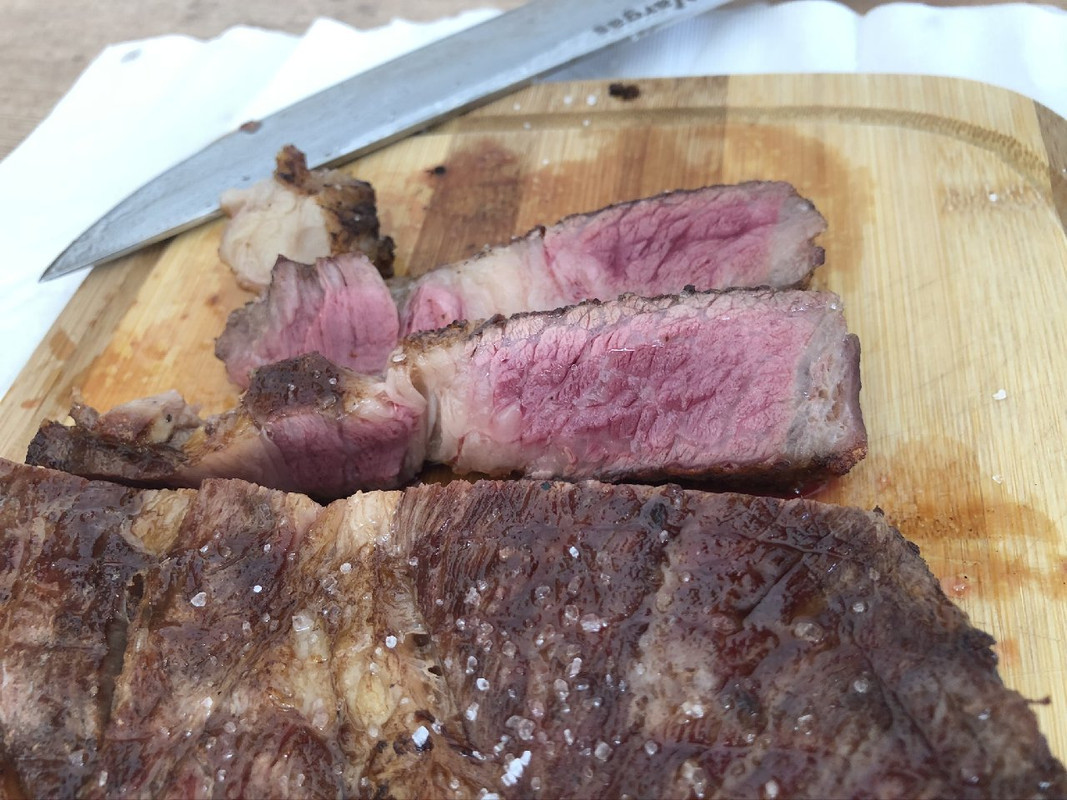...
A more coarse edge will really "hook into" what it is cutting. Which makes cutting slick materials (like soft tomatoes) easier. Really polished edges can slide off of slick material.
Back to paper for a moment. Try these exercises:
1. Cut paper along one of the factory edges. Notice how it cuts.
2. Turn the paper 90 degrees and cut along a different factory edge. Do you notice a difference? You should because the grain of the paper runs through it and going with the grain is easier and against the grain is harder.
3. Get a fresh sheet and start with the "easy" side (with the grain). Line your blade up with the paper. Now notice that there are 3 axis that you can move the blade relative to the paper:
A. You can lean it over and cut a triangle off of the paper. Keep it as straight up and down as you can, so it cuts a rectangle. This is harder than an angled cut.
B. Start again and notice that you can rotate the knife so that it is straight like in (A) above, but the blade is angled with the *edge* of the paper. Make that angle 90 degrees. This is harder.
C. Start again. Line up like in (A) and (B) above. Notice that you can tilt the back of the blade up or down, which makes yet another angled cut into the edge of the paper. Make this 90 degrees also. So 90 degrees in all three dimensions directly into the edge of the paper. This is the most "pure" push cut you can make and is the most difficult.
Many very sharp edges can't really start a push cut into phonebook paper with a pure 90 degree cut in all dimensions.
Try this with the grain *and* against the grain. Against the grain is quite difficult. My super polished edges from the Spyderco UF could push cut, against the grain, with a 90 degree angle in all 3 dimensions. Less polished edges will struggle to do it....
Wow, thanks a lot for your input! So you are saying that when those guys cut extremely thin slices of a tomato (without even holding it in place), they probably finished their edge on a coarse (medium at best) stone? This is so counter intuitive... but it does make sense that a very polished edge might not "bite" and actually slide off. I would love to test it and check for myself.
As for the tests, I will be honest with you... it's a little hard to visualize exactly what you are describing. I find it specifically hard to know what's the grain direction in the paper. HOWEVER I think I get most of it and it boils down to experimentation. You made it clear... the angle you approach the paper on all 3 dimensions will change dramatically how the knife performs, being influenced both by the angle of the blade and also by the constitution of the paper. I'll experiment and check if a knife that seems to cut buttery smooth (on my tests) can still perform well cutting paper in several different ways.
I already got that nothing will replace experimentation. It's kinda addicting. lol
This is what I was talking about earlier in this thread:
A higher grit stone is the easiest way to reduce a burr and get a sharp edge, at least for me. If you don't need the "low-grit aggressive toothy edge" I mentioned you can absolutely finish even "crappy" knives on the 6000 grit stone. An edge properly finished on 6000 grit will not perform worse in push cutting than one finished on 1000 grit. The initial drop in sharpness is faster but it stays at or above the level of the 1000 grit edge after the same amount of work. If the edge fails quickly you probably had a wire edge: a kind of burr that is aligned and strong enough to cut but not to last—this can happen even on fine stones. The other possibility is that you're trying to put on too acute an edge for that steel to handle, but that will be the case for coarse or fine grit finishes alike.
The more I experiment the more even the previous comments make sense. This too.
However I think I got to a point where I'm actually able to remove a burr completely (or it feels like it) even on a coarse stone. It cuts through paper and doesn't catch... It just feels much more buttery smooth after I've put some time on a 6000.
I'll try to put some more time on just the coarse stone to see how sharp I can get a knife, and I really want to try and thin slice a tomato with it!
My coarse stone is only 320 though... maybe that's too coarse to get decent results.
a 400 here is kinda cheap but feels like a waste moving up just that taddy bit. I'm inclined to get a King 800 for that (not that cheap... at least here in Brazil), but I honestly feel like I've spent too much money already on something that I have just begun doing (and you guys know how these things go... you never know if I'll get bored in 1 month and never sharpen again... I'd feel better to wait a little longer before investing any more dough in this).
BTW, you guys are awesome... I love internet forums, there's just something about sharing knowledge. Hopefully I'll soon have something to add myself.





